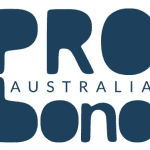Superannuation – Upcoming changes to be aware of

29 June 2021 at 7:00 am
Breakthrough Accounting takes us through some of the super changes taking place this week and highlights some of the challenges you should have on your radar.
Later this week, the superannuation guarantee (SG) rate will increase from 9.5 per cent to 10 per cent as part of the legislated increase set to take place over the next five years.
In addition, the recent federal budget saw a raft of new superannuation measures being announced.
The purpose of this article is to provide a round up of these super changes and highlight some of the practical challenges involved with implementation.
Increasing the SG rate
Although there was much conjecture in the lead-in to the federal budget that the government would abandon or curtail the planned SG rate increase as a result of COVID-19, no statement was made to this effect.
This means that the minimum SG rate will increase from 9.5 per cent to 10 per cent from 1 July 2021, with further increases of 0.5 per cent each financial year thereafter until it reaches 12 per cent from 1 July 2025.
Impact of increase
Whilst the impact of this will ultimately depend on the way that your organisation is structured, we expect that it may affect cash flow in the following ways:
- by increasing superannuation expense (where employees are paid their super on top of their hourly rate or salary);
- by increasing workcover premiums (as workcover is calculated based on wages and superannuation); and
- by increasing payroll tax liability.
In some cases, an increase in a business’ superannuation expense may result in it becoming liable to payroll tax for the first time.
Whether this increase will ultimately constitute an additional employer funding requirement or will be funded from existing remuneration costs will depend on whether employers operate:
- a “salary plus superannuation” arrangement, thus resulting in an incremental additional superannuation cost; or
- a “total employment cost” arrangement, whereby employers will fund the increase by way of a reduction to existing salary entitlements.
Practical considerations
We see the key challenge for employer’s implementing this increase being that of timing.
The key date that employers will need to take note of is the date that payroll (including superannuation) is paid. This is because for salary and wage payments made on or after 1 July 2021, the minimum SG contribution rate of 10 per cent will need to be applied.
By way of example, say an organisation operates on the basis of a fortnightly pay cycle ending on 28 June 2021. Following this, it processes payroll on 29 June 2021 and pays employees on 30 June 2021, the existing SG rate of 9.5 per cent will apply.
However, if payroll is not processed until 30 June 2021 and not paid out until 1 July 2021, the new SG rate of 10 per cent will apply. This is notwithstanding the fact that the entire payroll period fell in June.
We recommend that employers clarify with their payroll provider prior to 1 July 2021 how the change will be implemented in the payroll system, including conducting testing and exception reporting to ensure that implementation of this rate change runs smoothly.
We note that significant penalties will apply to employers that fail to pay superannuation correctly, so a clear understanding of your obligations will be crucial.
Removing the $450 / month threshold
In addition, as part of the federal budget, the government announced that it will be removing the $450 per month minimum income threshold, under which employees do not have to be paid the SG by their employer.
This measure is aimed at improving equity in the superannuation system and means that all workers will be entitled to save for their future, regardless of how much they earn. This is a very positive announcement given that approximately 300,000 more individuals will receive SG payments, 63 per cent of whom are women.
This measure is expected to have effect from 1 July 2022, however, this will depend on when royal assent of the enabling legislation takes place.
Increasing the First Home Super Saver Scheme (FHSSS)
The government also announced that it would be increasing the maximum releasable amount under the FHSSS from $30,000 to $50,000 to help Australians save for their first home.
Voluntary contributions made from 1 July 2017 up to the existing limit of $15,000 per year will count towards the total amount to be released.
This measure is expected to have effect from 1 July 2022.
Reducing the eligibility age for downsizer contributions
It was also announced that the government will be reducing the eligibility age to make downsizer contributions from 65 to 60 years of age in order to free up the stock of larger homes for younger families.
This contribution allows individuals to make a one-off, post-tax contribution to their superannuation of up to $300,000 per person (or $600,000 per couple) from the proceeds of selling their home subject to meeting certain criteria.
It should be noted that downsizing contributions will count towards age pension assessment tests.
This measure is expected to have effect from 1 July 2022.
Repealing the work test
The government also announced that it will be allowing individuals aged 67 to 74 years (inclusive) to make or receive non-concessional or salary sacrifice superannuation contributions without meeting the work test.
Currently, individuals in this age bracket can only make voluntary contributions or receive contributions from their spouse if they meet the work test (are working at least 40 hours over a 30 day period in the relevant financial year) or otherwise meet an exemption.
This measure aims to simplify the rules governing superannuation contributions and increase flexibility for older Australians to save for their retirement.
This measure is expected to have effect from 1 July 2022.
Other super-related announcements in the budget
- Individuals will be permitted to exit a specified range of legacy retirement products over a two-year period, with full access to all underlying capital.
- Residency requirements for self-managed superannuation funds and small APRA-regulated funds will be relaxed.
- A new electronic sharing mechanism will be built to enable superannuation assets to be more readily identified in family law proceedings.
- Additional funding will be provided to APRA and Super Consumers Australia to support stronger consumer outcomes and enforce increased transparency and accountability.
- Additional funding will be provided to the ATO to administer the transfer of unclaimed superannuation money directly to KiwiSaver.
- The government will not be proceeding with a measure to extend early release of superannuation to victims of family and domestic violence, however, will be providing $998.1 million for initiatives to support victims of such violence.
What does all of this mean?
Apart from the SG rate increase, all of the above measures are not yet law.
In our view, it will be vital for finance teams to proactively manage these changes as they take effect and keep informed about the legal mechanics of implementation (e.g. the timing question, particularly as more changes are expected to straddle the June/July period).
At Breakthrough Accounting, we have over 25 years payroll experience. We pride ourselves on keeping up to date and informed regarding changes in this area and are particularly knowledgeable about the accounting-legal nuances involved with implementation of new measures.
As an accounting firm that specialises in providing NFPs an end-to-end solution that includes accounting, bookkeeping and payroll, we are very passionate about working alongside NFPs and empowering them to see breakthroughs for their organisations.
If you or your organisation have any questions regarding the above, please get in contact with us. We would love to hear from you.







